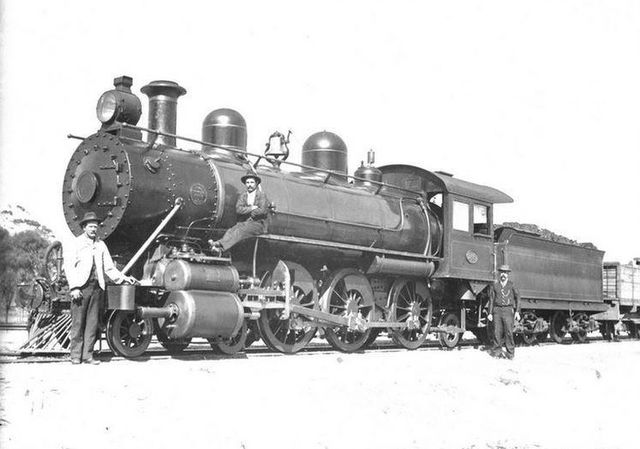The Vauclain compound was a type of compound steam locomotive that was briefly popular from the early 1890’s to the mid-1900’s. Developed by the Baldwin Locomotive Works, it featured two pistons moving in parallel, driving a common crosshead and controlled by a common valve gear using a single, complex piston valve.
Vauclain compound Engine 618 of the Canada Atlantic Railway
Baldwin Works high-speed 2-4-2 locomotive
WAGR Ec class showing typical application of Vauclain compound system; note connection of both cylinders to crosshead and the valve chamber inboard of the high-pressure cylinder
WAGR L class locomotive created by rebuilding class Ec compound
A compound locomotive is a steam locomotive which is powered by a compound engine, a type of steam engine where steam is expanded in two or more stages. The locomotive was only one application of compounding. Two and three stages were used in ships, for example.
Vauclain four-cylinder compound locomotive Milwaukee Road class A2 No. 919.
Cutaway view of the cylinders (low-pressure on left, high-pressure on right) and valves (above) on a tandem compound engine
Burrell road locomotive, showing high- and low-pressure cylinders.







